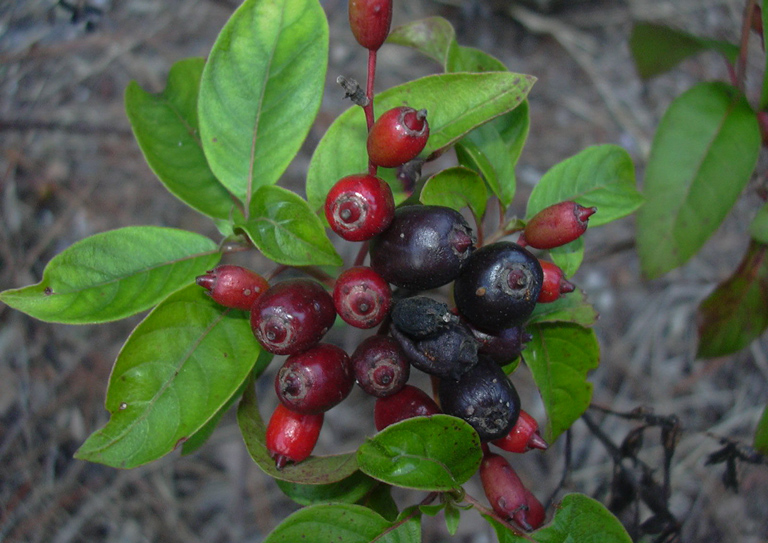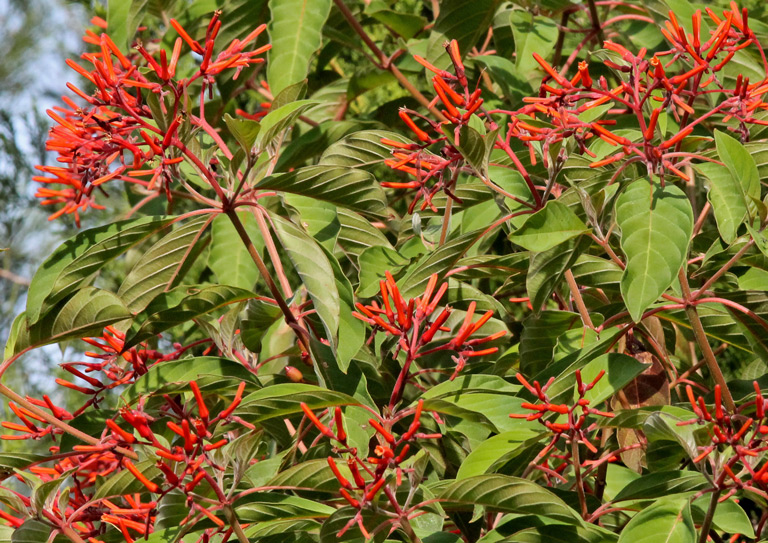Firebush
Pictured above: Firebush (Hamelia patens var. patens) by Mary Keim. Click on terms for botanical definitions. View post as a PDF.
Firebush is a hardy, fast-growing and showy evergreen shrub to small tree found in hardwood hammocks and coastal and upland forests. It typically blooms spring through fall but can bloom year-round in warmer climes. Its nectar-filled flowers vary in length, attracting both butterflies and hummingbirds. Its berries are plentiful and are eaten by a variety of birds and small mammals. They are also edible to humans, although the taste is not particularly desirable.
Firebush produces clusters of bright orange to red thinly tubular flowers. Leaves are elliptical to ovate with entire margins and pointed tips. Petioles and veins are often reddish. Leaf arrangement is usually whorled but may be opposite. Fruits are small green berries that turn red and then purplish-black as they mature. They are born in clusters.

The genus name Hamelia honors the French botanist Henry Louis Hamel de Monceau (1700–1782). The species epithet patens is Latin for “spreading” or “to be open” and refers to the plant’s growth habit.
Leaves, stems and flowers have many medicinal properties including anti-inflammatory, analgesic and diuretic treatments.
Family: Rubiaceae (Coffee, bedstraw or madder family)
Native range: Central and southern peninsula from Marion County south
To see where natural populations of firebush have been vouchered, visit www.florida.plantatlas.usf.edu.
Hardiness: Zones 8B–11
Lifespan: Perennial
Soil: Dry to moist, sandy, somewhat alkaline soils
Exposure: Full sun to full shade
Growth habit: Up to 10’ tall, with 3-6’+ spread
Propagation: Seed, cuttings
Garden tips: Firebush is one of Florida’s best plants for attracting butterflies and birds. It can be used as a specimen plant or in a border or mass planting. It is relatively tolerant of salt and wind and is a moderately fast grower. Plant in full sun for best flowering or more shade for attractive flowers.
Caution: Avoid nonnative varieties of Firebush, particularly H. patens var. glabra (frequently sold as African, Dwarf or Compact firebush), as it may interbreed with the native firebush. Calusa firebush is a native cultivar that may be used if a more compact size is desired.
Firebush is often available at nurseries that specialize in Florida native plants. Visit PlantRealFlorida.org to find a native nursery in your area.

